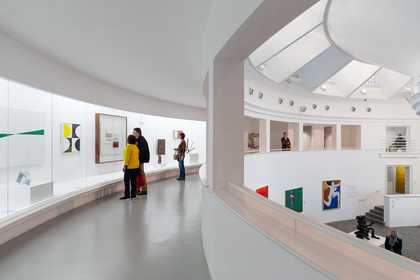Explore work from the 1950s on by abstract artists who made art from nonrepresentational elements
Often bound up with social and political ideals, the selection of works presented here reveals how common aspirations developed in different international contexts.
In the 1950s British ‘constructionists’, such as Victor Pasmore and Kenneth and Mary Martin reconsidered the work of abstract pioneers such as Naum Gabo and Piet Mondrian. They responded with a new approach based on mathematic proportion and geometry. Inspired by the optimism of the 1951 Festival of Britain and its integration of modern art, architecture and industrial design, their ideals were also bound up with social regeneration.
Across South America, modern art and architecture were embraced as a sign of political progress and social change. In Brazil younger artists such as Lygia Clark reacted against dominant trends of geometric art. They sought to bring their work closer to everyday life by actively involving the viewer in their abstract works. In Venezuela, German émigré Gego created her own delicate style of geometric abstraction that drew on the boom in modern architecture and engineering.
In the Middle East, Lebanese artist Saloua Raouda Choucair was a pioneer of modern abstract painting and sculpture. Inspired by physics, sufism, modern architecture and engineering, her work comprises a broad range of materials and techniques that define modern art from a non-western perspective.
While her ‘poem’ sculptures share Hepworth’s use of organic forms, or the improvised arrangements of Clark’s ‘creatures’, they are distinctly rooted in
the rhythms and structures of Islamic design and poetry.
Tate St Ives

